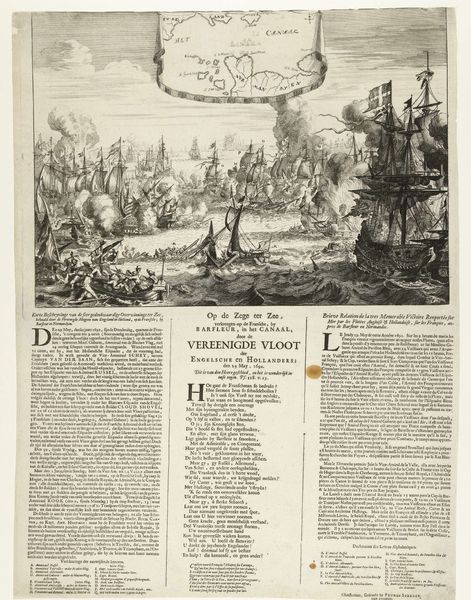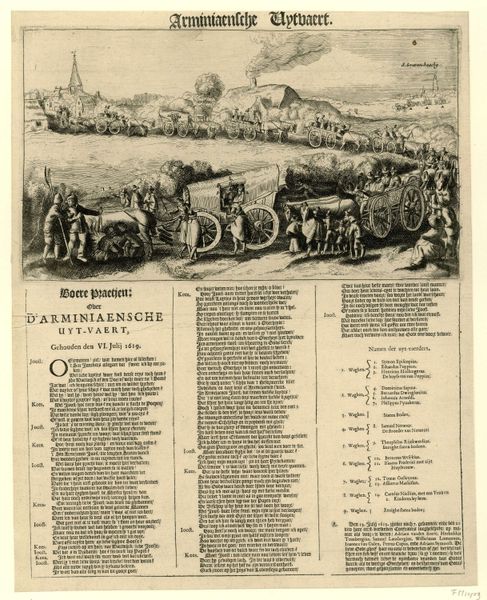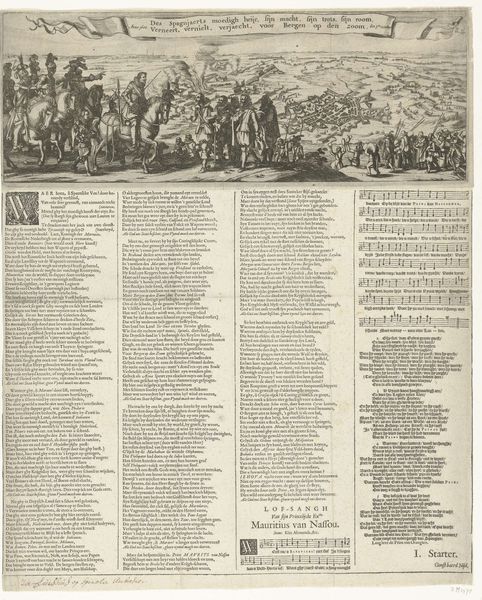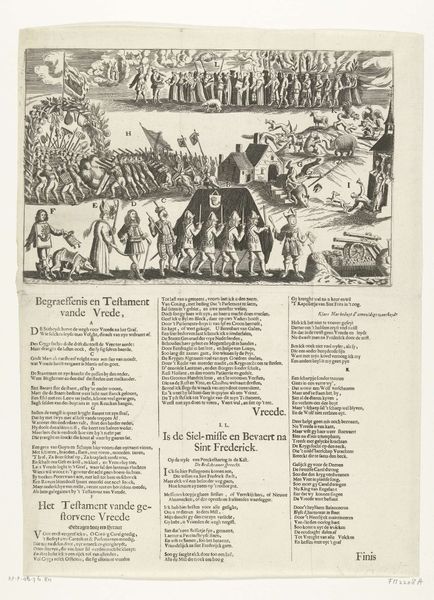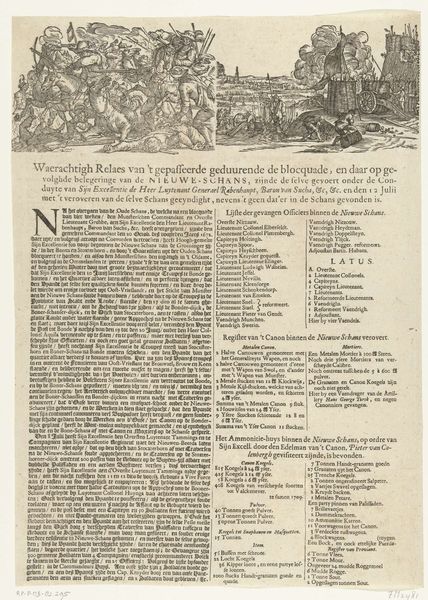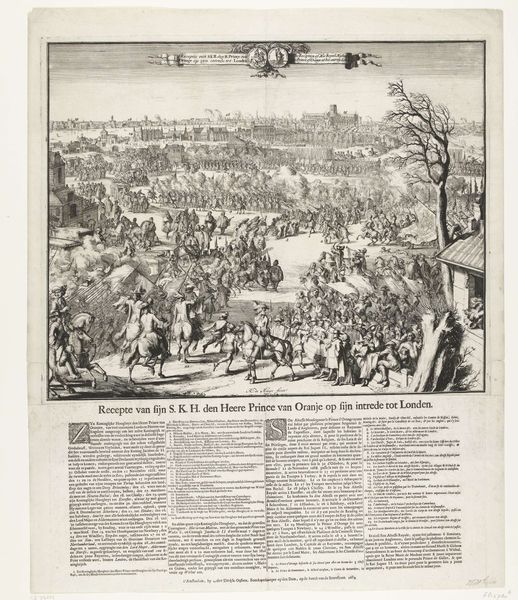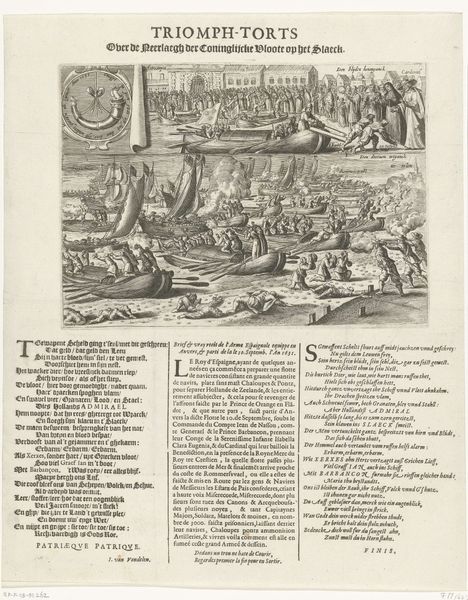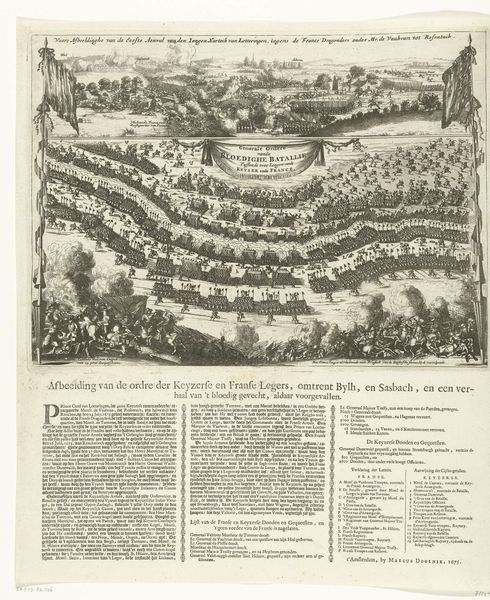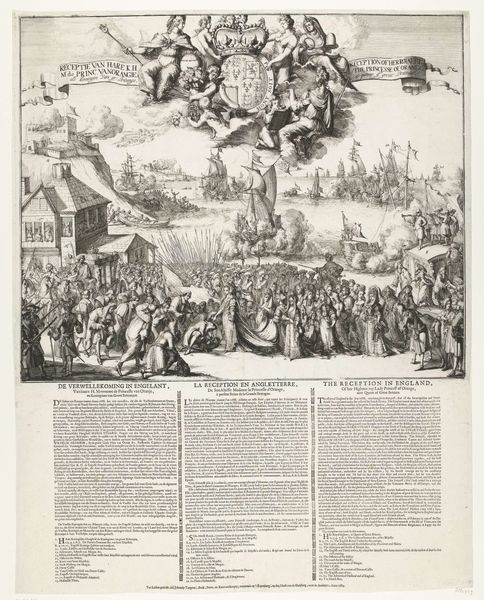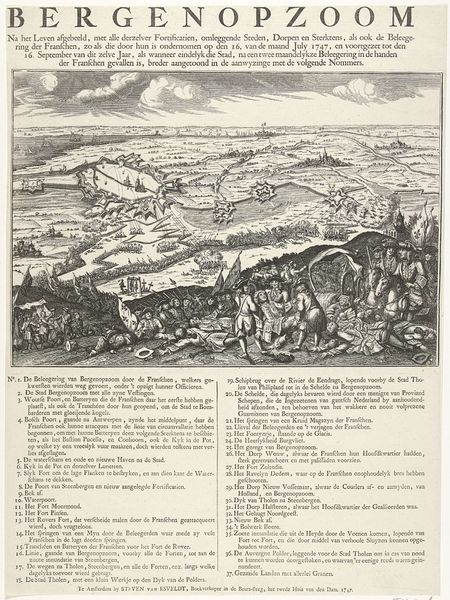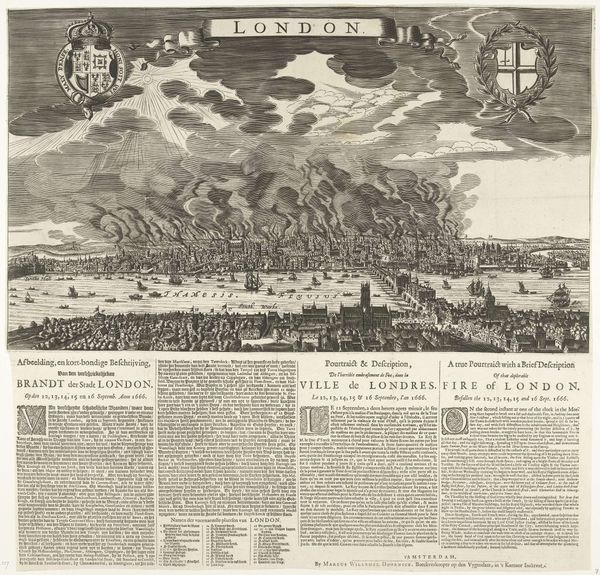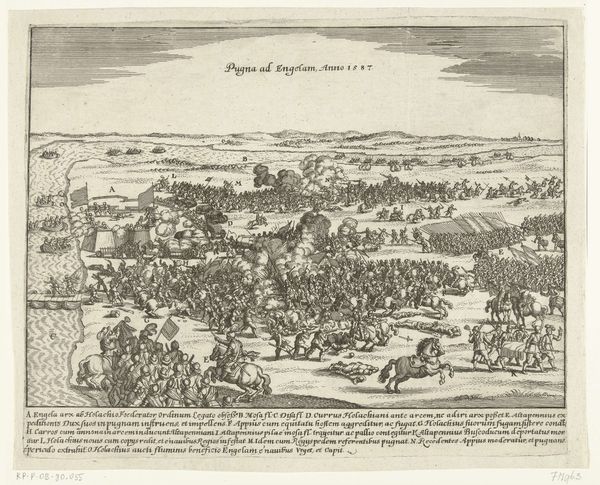
#
page thumbnail
#
page layout composition
#
spread layout sheet
#
journal
#
newspaper layout
#
spread layout
#
publication layout
#
photo layout
#
page layout
#
social event documentation
Dimensions: height 336 mm, width 283 mm
Copyright: Rijks Museum: Open Domain
Claes Jansz. Visscher created "The Arminian Funeral" in 1619 using etching. The stark contrasts of black ink on white paper immediately convey a sense of drama and solemnity. The procession of horse-drawn carriages winds across the landscape, meticulously rendered with fine, deliberate lines. The composition is divided into distinct zones, each filled with figures and text, creating a dense, almost claustrophobic visual field. This division and detail invite us to decode the underlying structure and the symbolic meanings embedded within. The funeral becomes a stage upon which religious and political tensions play out. Visscher uses a semiotic system, where each element—carriage, figure, text—acts as a sign, pointing to the complex cultural codes of the time. The artwork destabilizes any fixed understanding of piety, engaging with new ways of perceiving power. Note how the meticulous linework and the carefully arranged composition function not just aesthetically, but as integral parts of a larger discourse on faith, authority, and societal order. It invites ongoing interpretation, recognizing that meaning is neither fixed nor final.
Comments
rijksmuseum about 2 years ago
⋮
After the Synod of Dordrecht, all of the ministers who had attended the meeting had to accept the decisions made there. If they did not, they would be banished from the Netherlands. Most of the Remonstrant clergymen refused to sign and were therefore forced to leave. This satirical print and the accompanying ‘boorish conversation’ clearly convey that their victorious opponents, the Reformed Protestants, had no compassion for them at all.
Join the conversation
Join millions of artists and users on Artera today and experience the ultimate creative platform.
